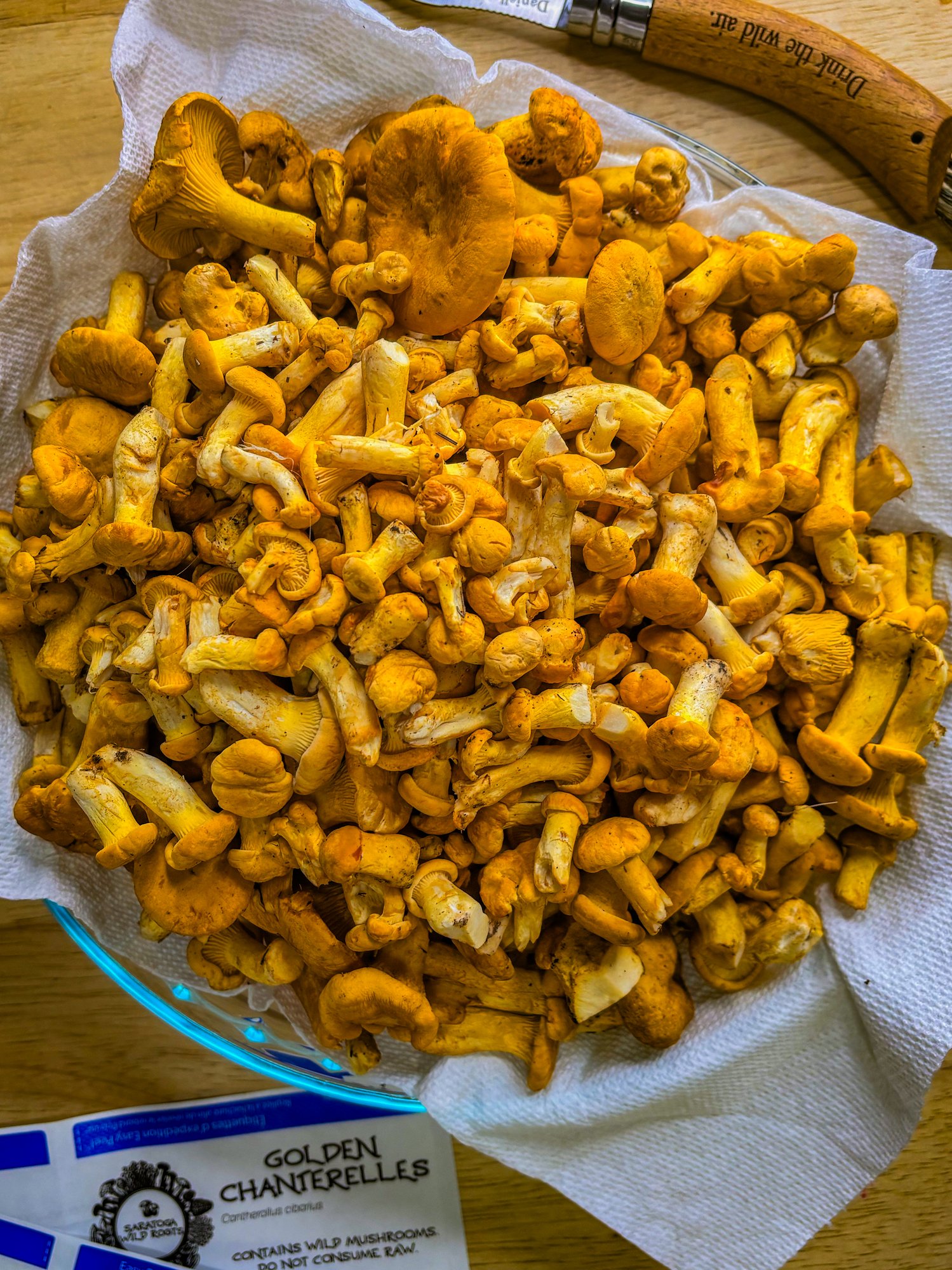
There are 20+ species of North American Golden Chanterelles. While "cibarius" is technically European only, we now know, this summary describes the characteristics of our many Cantharellus "cibarius"-like Golden Chanterelles.
A staple of early summer through early autumn, Golden Chanterelles are as delicious as they are beautiful. They are mild, have an excellent texture, and carry a faint apricot aroma.

Chanterelles are amazingly versatile and can be used for limitless savory and sweet culinary applications.
According to The Flavor Bible, by Karen Page and Andrew Dornenburg, chanterelles have particular affinities for the following combinations:
chanterelles + butter + cream + garlic + parsley
and
chanterelles + cream + garlic + thyme
We also find chanterelles particularly enjoyable with trout and salmon, eggs, potatoes, and as jam.
Below, find a few recipes for your inspiration.

Use caution when consuming wild foods. No mushroom will harm you by touching it, smelling it, or even licking it. It is the actual swallowing and consumption we want to be aware of.
That being said, 99% of edible wild mushrooms should be thoroughly cooked before consuming to avoid gastrointestinal distress. If you're unsure how an edible mushroom will affect you, try a small amount and wait several hours before trying more, to see how your body reacts.
Fresh mushrooms should be stored in a cool, dry place, around 38°-42°F. Field cleaning your mushrooms is the best way to keep them tidy and limit your prep work later. Do not rinse mushrooms in water until you're ready to use them; this helps prevent rot and lengthen their freshness.
Should you choose to dehydrate your mushrooms, please note that your finished product is still considered raw, and should be cooked before consuming.